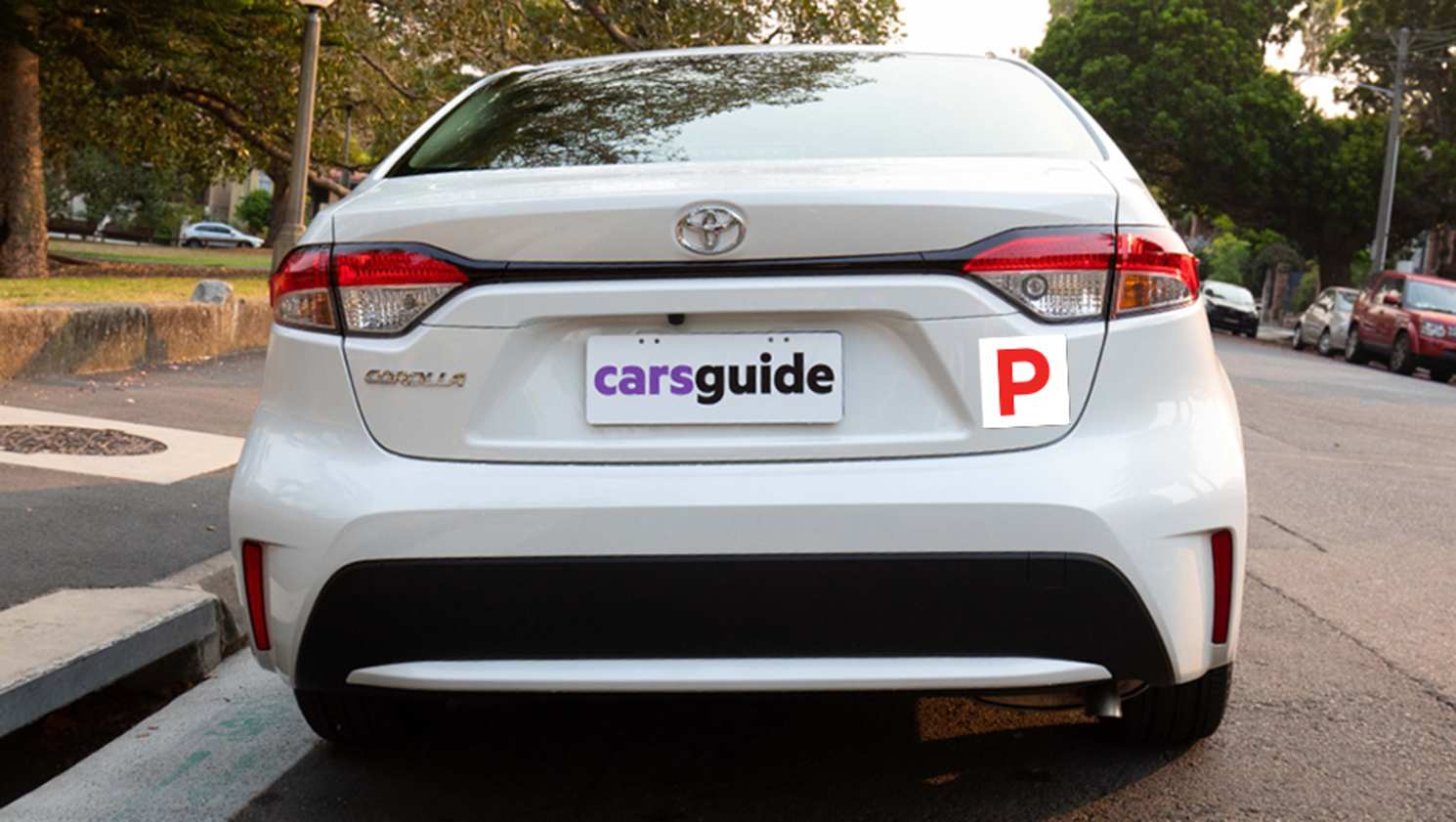While there are many P plate approved cars for new drivers, those with a taste for performance cars may be disappointed to learn that their favourite car is out of reach until they are awarded their full licence.
For the NT, ACT, Tasmania and WA, there are no vehicle restrictions for new drivers, however, the rest of the states each adopt a similar set of rules governing provisional licence holders with some variations.
In this article, we will explain what types of cars can be driven by P platers in their respective states, and detail where you can find an up-to-date list of P plater approved cars.
Typically, high-performance turbocharged, supercharged and V8 powered vehicles are off the table, but not always. Depending on the state you’re in, some turbocharged cars may appear on the P plate legal car list as they meet a power-to-weight requirement.
With the rise of the electric vehicle, power outputs have shot through the roof and many dual-motor variants end up on the banned list. Out of the 905 electric vehicle entries for NSW, 421 vehicles are banned and 11 are listed as ‘For Review’. The upcoming 2024 dual-motor Polestar 3 and 4 are off the list, unfortunately, for freshly minted P platers.
It’s worth noting that some P platers may be able to get an exemption for a high-powered model if they can prove that they are in a special circumstance, like requiring the vehicle for work purposes.
.jpg)
However, bear in mind high-performance vehicles like a Maserati Grecale, Ford Mustang GT and Jaguar F-Pace SVR 575 Edition are unlikely to be approved for ‘work purposes’ (but if they ever are, please DM me your work details).
Can P platers drive turbocharged cars? In 2012, Victoria’s road regulation body VicRoads announced that it would allow provisional licence holders to drive any vehicle with a power-to-weight ratio up to 130kW/1000kg.
This rule was put in place due to the rise of small-capacity turbocharged engines. For instance, since the rules were updated, P plater drivers can now operate models like the turbocharged Volkswagen Golf 110TSI, which uses a 1.4-litre petrol engine that makes 110kW of power.
.jpg)
How do you work out your power to weight ratio? The formula is simple:
(max power output kW ÷ tare mass) x 1,000 = kW/t.
So, if your vehicle has a max power output of 225kW and a tare mass of 1560kg, it has a 144kW/1000kg power-to-weight ratio.
The list of P plate approved vehicles is constantly under review. In 2020, the Subaru WRX was P plate prohibited in Victoria in all but the entry-level automatic-transmission variant, now just the variants with manual transmissions are banned.
.jpg)
While the $49,990 before on-road costs price tag for a new Subaru WRX might be a big ask for a new driver, its 202kW/350Nm 2.4-litre boxer engine offers a lot of performance, even with the self-shifting transmission.
Other sporty models like the 2024 Hyundai i30 N Premium are slightly too powerful for states with the 130kW/tonne power-to-weight requirement.
With a 206kW engine and 1480kg kerb weight, the Hyundai i30 N Premium has a power-to-weight ratio of 139kW/tonne, so it only just misses out.
Read on to see a state-by-state breakdown of P plate vehicle restrictions, and where you can find a list of P Plate approved cars.
P plate legal cars NSW
The rules for P1 and P2 licence holders in New South Wales dictate that the following high-performance vehicles are banned:
- Power-to-weight ratios of greater than 130kW per tonne or
- Modified engines that need to be approved by an engineer or
- Other vehicles classified as high performance.
You can find a detailed list of P Plate approved vehicles in NSW here. You can search using specific vehicle data or search ‘all’ to see the most recent vehicles.
P plate legal cars Vic
Victoria largely mirrors the legal probationary car rules as NSW, defining a prohibited high-performance vehicle by the following:
- A power-to-mass ratio of greater than 130kW per tonne or
- An engine that has been modified to increase performance (other than a modification made by the manufacturer during the vehicle’s manufacture) or
- Been declared as probationary prohibited in the Victorian Government Gazette.
VicRoads offers a P plate legal cars list, as well as information regarding exemption eligibility here.
P plate legal cars SA
In South Australia, the high powered vehicle rules do not apply to provisional licence holders over the age of 25.
In 2014, South Australia adopted a power-to-weight requirement, allowing vehicles manufactured after January 1, 2010, to be driven by provisional licence holders, regardless of engine type unless:
- The vehicle has a power-to-weight ratio greater than 130kW per tonne or
- A vehicle that has been modified to alter engine performance
For vehicles manufactured before 1 January 2010, South Australia prohibits P platers from driving the vehicle if it has:
- Greater than or equal to eight cylinders or
- A turbocharged or supercharged engine (except diesel-powered vehicles with less than eight cylinders) or
- A vehicle that has been modified to increase engine performance (other than vehicles that have been so modified by the manufacturer in the course of manufacture of the vehicle) or
- Been nominated as a high-powered vehicle as listed in the South Australian Government Gazette.
There are excluded vehicles that have turbo charged or supercharged engines for fuel efficiency improvements and therefore are not classified as high performance vehicles, see the list here.
See this link to find more information about P Plate legal vehicles in SA.
P plate legal cars QLD
High-powered vehicle restrictions apply to Queensland P1/P2 licence holders under the age of 25.
Vehicles built after January 1, 2010, are specified as high-powered if it has:
- A power-to-weight ratio of more than 130kW/tonne or
- An engine modification that must be approved under section 17 of the Transport Operations (Road Use Management—Vehicle Standards and Safety) Regulation 2021.
Meanwhile, cars manufactured before January 1, 2010, are prohibited to P platers if:
- It has an engine with eight or more cylinders or
- A turbocharged or supercharged engine that is not diesel powered or
- An engine with a power output of more than 210kW or
- A rotary engine with an engine capacity of more than 1146cc or
- An engine modification that must be approved under section 17 of the Transport Operations (Road Use Management—Vehicle Standards and Safety) Regulation 2021.
There are some vehicles that are excluded from these requirements:
- Suzuki Cappuccino 2D Cabriolet Turbo 3 657–698cc (1992–1997)
- Daihatsu Copen L880 2D Convertible Turbo 4 659cc (2003 or later)
- Smart Fortwo Coupe 2D Turbo 3 698cc (2000 or later)
- Smart Fortwo Cabriolet Turbo 3 2D 698cc (2000 or later)
- Smart Roadster Turbo 3 2D 698cc (2000 or later)
- Toyota LandCruiser
The Queensland government offers a list of vehicles that can be driven on P1 and P2 licences, as well as comprehensive details on applying for an exemption. Said details can be found here.
While there are no such vehicle restrictions for new drivers in NT, ACT, Tasmania and WA, you can find information about provisional licensing at the following links.
Northern Territory licensing: NT Government
ACT licensing: ACT Police
Tasmania licensing: Tasmanian Government
Western Australia licensing: Department of Transport
According to NSW road safety authorities, high-performance vehicles are restricted for P platers, as it is in this time that drivers are most likely to be involved in an accident, and a powerful vehicle may be harder for an inexperienced driver to control.
However, as vehicle safety features continue to advance, some call for state governments to adjust the rules accordingly. But it’s fair to wonder if the rules need to be changed. In NSW, speeding causes 41 per cent of road fatalities and 24 per cent of serious injuries. For an inexperienced driver, is a high performance vehicle really needed?
.jpg)
.jpg)

.jpg)
.jpg)

.jpg)

.jpg)
.jpg)



_0.jpg)




_0.jpg)
.jpg)
.jpg)

.jpg)

